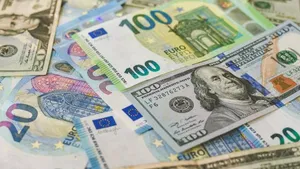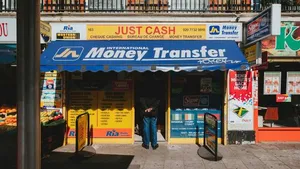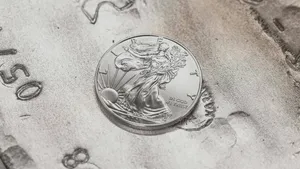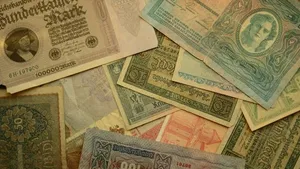Triffin's Dilemma: Solved.
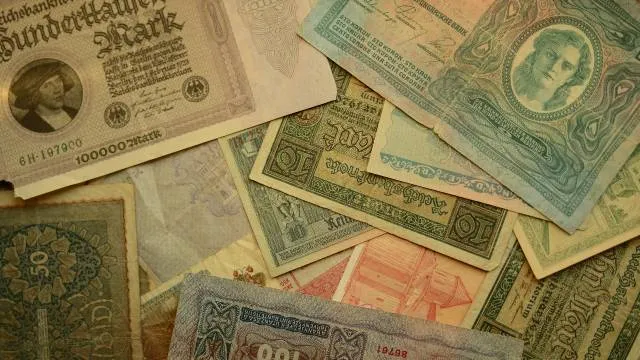
Triffin’s Dilemma Solved: How Metal-Backed Currencies Resolve Global Monetary Conflicts
Understanding the Triffin Dilemma: The Reserve Currency Trap
Picture this: You’re the world’s favorite restaurant, and everyone wants a reservation. But there’s a major issue: you want to please everyone and keep them happy and fed, so you have to give away more food than your kitchen can handle. Eventually, people start questioning whether you can keep the kitchen running. This is essentially what economist Robert Triffin identified in 1960 as the fundamental contradiction plaguing any nation whose currency serves as a global reserve currency.
The Triffin dilemma (sometimes, the Triffin Paradox) is the conflict of economic interests that arises between short-term domestic and long-term international objectives for countries whose currencies serve as global reserve currencies. In simpler terms, it’s an impossible balancing act: to supply the world with enough of your currency for international trade and reserves, you must run persistent trade deficits. But these very deficits eventually undermine confidence in your currency’s long-term stability.
Hence the dilemma, which in Triffin’s day took the well-known, specific shape: if the United States refused to provide other countries with US dollars, trade would stagnate and the world economy would eventually be trapped in a deflationary bias; but if the United States provided an unlimited supply of dollars, the confidence that it would convert them into gold would eventually vanish.
When Triffin made his prediction in 1960, the world operated under the Bretton Woods system, where the dollar was convertible to gold at a fixed rate of $35 per ounce. With more US dollars in the system than were backed with gold under the Bretton Woods agreement, the US dollar was overvalued relative to gold. True to Triffin’s warning, on August 15, 1971, President Richard M. Nixon announced that the United States would no longer redeem currency for gold. This was the final step in abandoning the gold standard.
But here’s the thing: while Bretton Woods ended, the dilemma didn’t disappear. It simply evolved. Today’s version manifests differently but carries the same fundamental tension. This paper delves into the complex issue of the instability and pro-cyclicality of Global Liquidity (GL), which is primarily driven by the structural scarcity of dollar-safe assets.
The Modern Face of an Old Problem
Today’s Triffin dilemma looks different from its 1960s predecessor, but the core mechanics remain troublingly familiar. Instead of gold convertibility concerns, we face what economists call the “dollar safe asset shortage.” The world’s appetite for stable, liquid dollar-denominated assets – particularly US Treasury securities – far exceeds what the US can sustainably supply without compromising its own fiscal health.
The US economy’s inability to supply sufficient dollar liquid assets to the global economy. The circular cumulative causality introduced by the use of a national currency as an international reserve currency perpetuates this issue, as it bestows the currency with higher liquidity than other safe assets.
What makes this particularly fascinating is how the dynamics have shifted. Indeed, the share of US Treasury securities held by foreign central banks has fallen dramatically, from over 40% after the global financial crisis to just 16% at the end of 2024. This suggests we’re witnessing a structural transformation in how global liquidity operates, even as the fundamental tensions persist.
Some economists argue we’ve moved beyond Triffin’s original framework entirely. We no longer live in a world where the reserve status of the dollar hinges on the US current account. That status now depends on the credibility of US institutions, the depth of its markets, and the robustness of the infrastructure that underpins the global dollar system. Yet this shift doesn’t eliminate the underlying contradictions – it merely relocates them from trade flows to institutional confidence and financial market dynamics.
Historical Attempts at Resolution: Lessons from Past Efforts
The search for solutions to reserve currency dilemmas isn’t new. History offers several instructive attempts, each illuminating different aspects of the challenge while highlighting why simple fixes tend to fall short.
The Keynes Solution: Bancor
Even before Triffin formalized the dilemma, John Maynard Keynes had anticipated the problem. John Maynard Keynes had anticipated this difficulty and had advocated the use of a global reserve currency called ‘Bancor’. Keynes envisioned bancor as a supranational currency that would eliminate the need for any single nation to bear the burden of providing global liquidity.
The bancor concept was elegant in its simplicity: create an international currency backed by a basket of commodities or currencies, managed by a global institution, and free from the domestic policy constraints that plague national reserve currencies. American economist Brad DeLong claims that on almost every point where Keynes was overruled by the Americans during the Bretton Woods negotiations, he was later proved correct by events.
Special Drawing Rights: The Incomplete Answer
The closest modern approximation to Keynes’ bancor is the International Monetary Fund’s Special Drawing Rights (SDRs). Historically, the IMF’s SDRs have been the closest thing to the proposed Bancor but they have not been adopted widely enough to replace the dollar as the global reserve currency. SDRs represent a basket of major currencies (currently the dollar, euro, yen, pound sterling, and Chinese yuan) and can be exchanged between central banks.
However, SDRs suffer from fundamental limitations. They exist primarily as accounting units for central bank transactions rather than functioning as genuine international money. Private markets can’t directly hold or trade SDRs, limiting their utility as a true alternative to dollar-based assets.
The IMF has advocated for Special Drawing Rights as an international reserve asset as a supplement for global liquidity. But supplementation isn’t substitution, and SDRs remain a minor player in global reserves.
The European Experiment
The creation of the euro represented another approach – developing a rival reserve currency large enough to provide genuine competition to the dollar. While the euro has achieved significant status as a reserve currency, it hasn’t fundamentally altered the global monetary system’s structure. Instead, it has created what some economists call a “duopoly” that may actually increase systemic risk by concentrating global liquidity provision between two large but potentially unstable currency zones.
Central Bank Digital Currencies: The New Frontier
The emergence of CBDCs and the development of the use of the private SDR, in conjunction with an international coalition, could create market pressures and the conditions for multilateral cooperation paving the way for systemic reform. Central Bank Digital Currencies represent the latest attempt to reimagine international money, though most current CBDC projects focus on domestic rather than international applications.
The potential for international CBDCs to address Triffin’s dilemma remains largely theoretical, as they would still face the fundamental challenge of whose central bank would issue and manage such a currency.
The Mathematical Solution: How Metal-Backed Currencies Eliminate the Dilemma
Here’s where things get interesting from a mathematical perspective. A properly structured metal-backed currency system can theoretically eliminate Triffin’s dilemma entirely, but only if it’s designed with specific mathematical properties that address the core contradictions.
The Fundamental Mathematical Framework
The key insight lies in understanding Triffin’s dilemma as a mathematical constraint problem. In traditional reserve currency systems, there’s an inherent mathematical impossibility: a nation cannot simultaneously maintain currency stability (requiring trade surpluses or balanced trade) and provide adequate global liquidity (requiring trade deficits) over extended periods.
Let’s define this mathematically:
For a reserve currency nation:
- L = Global liquidity demand (positive value, always growing)
- D = Trade deficit required to supply L (positive when in deficit)
- S = Currency stability (inversely related to D over time)
- C = Market confidence in currency (function of S)
The Triffin constraint can be expressed as: L ∝ D (liquidity provision requires deficits) S ∝ 1/D (stability decreases with persistent deficits) C = f(S) (confidence depends on stability)
This creates an unstable system where increasing L eventually drives C toward zero.
How Metal Backing Breaks the Constraint
A metal-backed currency system fundamentally alters this mathematical relationship by introducing an external anchor that decouples liquidity provision from trade flows. Here’s how:
Metal Reserve Equation: If M = total metal reserves backing the currency, and R = fixed exchange rate between currency units and metal weight, then:
Currency Supply = M × R
This creates several crucial mathematical advantages:
-
Liquidity Independence: Global liquidity L becomes a function of metal reserves (M) rather than trade deficits (D): L = f(M) instead of L ∝ D
-
Stability Anchoring: Currency stability S becomes anchored to metal value rather than trade performance: S = f(Metal Market Stability) rather than S ∝ 1/D
-
Confidence Restoration: Market confidence C becomes based on verifiable physical reserves: C = f(M, Verification Systems) rather than C = f(Trade Performance)
The Basket Optimization Problem
While single-metal backing (like the historical gold standard) provides the mathematical framework, a basket of precious metals offers superior stability through diversification. The optimal basket composition can be determined through portfolio optimization theory.
Variance Minimization: For metals i = 1, 2, …, n with weights wi and covariance matrix Σ, the optimal basket minimizes:
Portfolio Variance = Σ wi × wj × σij
Subject to: Σ wi = 1 (weights sum to 100%)
Historical data suggests an optimal basket might include:
- Gold: ~40-50% (stability, liquidity)
- Silver: ~30-40% (industrial demand stability)
- Platinum: ~10-15% (scarcity premium)
- Palladium: ~5-10% (industrial applications)
The Self-Regulating Mechanism
Under a gold standard, creating more currency requires obtaining more gold, which raises gold’s market price and stimulates increased mining. More gold is then used to back more money until a point when currency levels are adequate, the price of gold levels out, and mining is scaled back accordingly. It is a self-regulating system.
This self-regulation extends to basket systems. When demand for the metal-backed currency increases, it drives up metal prices, which:
- Incentivizes increased metal production
- Encourages recycling and improved extraction technology
- Automatically adjusts the money supply through market mechanisms
- Maintains long-term price stability through supply-demand equilibrium
Eliminating Boom-Bust Cycles
Traditional fiat systems suffer from boom-bust cycles partly because money supply can expand without constraint. Under a fiat money system the production of money has no natural self-regulation mechanism. Metal backing provides mathematical constraints that prevent excessive monetary expansion while allowing organic growth tied to real economic productivity.
Mathematical Proof of Stability: If we define economic output as Y and money supply as M, then under metal backing: dM/dt ≤ k × dMetal_Supply/dt
Where k is the backing ratio. This constraint ensures money supply growth cannot exceed the rate of metal acquisition, providing inherent stability.
Digital Implementation: Blockchain as the Perfect Vehicle
The mathematical elegance of metal-backed currencies becomes truly practical when implemented through blockchain technology. This isn’t about creating another cryptocurrency – it’s about using distributed ledger technology to create verifiable, tradeable claims on physical metal reserves.
Why Blockchain is Ideal for Metal-Backed Currency
Blockchain technology solves several critical implementation challenges that historically plagued metal-backed systems:
Verification and Auditing: Every unit of digital currency can be cryptographically linked to specific physical metal reserves, with immutable records of custody and location. Smart contracts can automate regular auditing processes and provide real-time verification of backing ratios.
International Accessibility: Unlike physical gold or silver, blockchain-based metal claims can be transferred instantly across borders without the costs and risks of physical transportation. This makes the system practical for international trade and allows AI systems to participate in the global economy.
Fractional Precision: Digital tokens can represent precise fractions of metal ownership, solving the divisibility problems that made historical metal currencies impractical for small transactions.
Elimination of Counterparty Risk: Traditional gold-backed systems required trust in institutions that held the physical metal. Blockchain systems can use decentralized custody solutions, multisignature wallets, and transparent reserve auditing to minimize counterparty risk.
Technical Architecture for Stability
The ideal blockchain implementation would feature:
Multi-Chain Compatibility: The currency should operate across multiple blockchain networks to prevent single points of failure and maximize accessibility.
Oracle Integration: Real-time price feeds from multiple precious metals markets ensure accurate valuation and enable automatic rebalancing of baskets.
Governance Mechanisms: Decentralized governance systems can manage basket composition adjustments, custody arrangements, and protocol upgrades without central authority control.
Regulatory Compliance: Built-in compliance features can satisfy international regulatory requirements while maintaining the system’s decentralized benefits.
Addressing AI and Digital Economy Needs
One compelling advantage of blockchain-implemented metal backing is its compatibility with AI systems. As artificial intelligence becomes a larger participant in the global economy, these systems need access to stable, programmable money that can operate without human intervention.
Traditional banking systems aren’t designed for AI actors – they require human identity verification, legal residency, and other biological prerequisites. A blockchain-based metal-backed currency provides AI systems with direct access to stable, internationally accepted money while maintaining the mathematical stability advantages of metal backing.
Global Trade and Monetary Stability Implications
The implementation of a properly designed metal-backed currency system would create profound changes in global trade dynamics and monetary stability. Understanding these implications helps illustrate why this approach offers genuine solutions to longstanding international monetary problems.
Trade Balance Normalization
One of the most significant benefits would be the normalization of global trade balances. Currently, the United States running the largest current account deficit in the world as a consequence of its reserve currency status. Under a metal-backed system, no single nation would need to run persistent deficits to provide global liquidity.
This change would allow countries to optimize their trade policies for domestic economic benefit rather than global monetary management. Nations could focus on their comparative advantages without the distortions created by reserve currency obligations.
Inflation Stability and Predictability
Historical evidence strongly supports the price stability advantages of metal-backed systems. Between 1880 and 1914, the period when the United States was on the “classical gold standard,” inflation averaged only 0.1 percent per year. Compare this to modern fiat systems: the average of 4.1 percent between 1946 and 2003.
This stability isn’t merely historical curiosity – it represents a fundamental mathematical property of constrained money supply systems. When money creation requires acquiring real resources (metals), the natural scarcity of these resources provides automatic inflation control that doesn’t depend on central bank discretion or political pressure.
Elimination of Currency Wars and Competitive Devaluation
Metal backing would fundamentally alter the dynamics of international monetary competition. Currently, nations can gain temporary trade advantages through currency devaluation, leading to beggar-thy-neighbor policies and currency wars. Under metal backing, such devaluations become mathematically impossible without sacrificing metal reserves – creating natural limits on competitive devaluation.
Enhanced Global Financial Stability
A precious metals basket has historically posted positive returns when volatility has spiked. This represents a sharp contrast to global equities, which have exhibited negative returns and significant drawdowns during the same periods. This stability characteristic would extend to a metal-backed currency system, providing a stable anchor during financial crises.
The self-regulating nature of metal-backed systems also reduces the likelihood of asset bubbles. Over the 179 years that the United States was on some form of a gold or metallic standard (1792–1971), the economy grew an average of 3.9% each year. Since 1971, under a fiat money standard not backed by gold in any way, economic growth has averaged 2.8% per year. While correlation doesn’t prove causation, these figures suggest that metal backing is compatible with robust economic growth while providing superior stability.
International Cooperation and Reduced Monetary Sovereignty Conflicts
Perhaps most importantly, a metal-backed system would reduce conflicts between domestic monetary policy and international monetary stability. The importance that governments attach to full employment means that they are unlikely to make maintaining the gold standard link and its corollary, long-run price stability, the primary goal of economic policy.
A modern metal-backed system implemented through international cooperation could preserve domestic policy flexibility while providing global monetary stability. Unlike historical gold standards that required individual nations to sacrifice domestic objectives for international stability, a properly designed system could allow coordinated policy responses to economic shocks while maintaining the mathematical constraints that ensure long-term stability.
Implementation Challenges and Realistic Pathways
While the mathematical and theoretical case for metal-backed currencies is compelling, practical implementation faces significant challenges. Understanding these obstacles honestly is crucial for developing realistic pathways toward reform.
Political Economy Obstacles
The most substantial barriers are political rather than technical. Political obstacles, such as the US authorities’ veto at the IMF level, exist for any fundamental reform of the international monetary system. The United States derives significant benefits from dollar dominance – what economists call “exorbitant privilege” – including the ability to finance deficits by printing the world’s reserve currency.
Any transition to a metal-backed system would require either US cooperation or the development of alternative systems that could compete with dollar dominance. The latter path seems more realistic given demonstrated US resistance to monetary system reform.
Technical Implementation Complexities
Several technical challenges require careful design solutions:
Custody and Storage: Physical metals must be stored securely across multiple jurisdictions to prevent single points of failure. This requires international agreements on storage standards, security protocols, and emergency access procedures.
Price Discovery and Basket Management: Determining optimal basket compositions and managing rebalancing requires sophisticated mathematical models and real-time market data integration. The system must be responsive enough to adapt to changing economic conditions while stable enough to provide monetary anchor functionality.
Scalability Considerations: The total value of global money supply far exceeds current precious metals market capitalization. Transitioning to metal backing would require either gradual implementation or innovative approaches to fractional backing that maintain mathematical stability while accommodating scale requirements.
Gradual Implementation Strategy
The most realistic pathway involves gradual, market-driven adoption rather than wholesale system replacement:
Phase 1: Parallel Development: Create blockchain-based metal-backed currencies alongside existing fiat systems, allowing market participants to choose based on their needs for stability versus policy flexibility.
Phase 2: International Trade Integration: Facilitate adoption of metal-backed systems for international trade settlements, particularly in regions seeking alternatives to dollar dependence.
Phase 3: Central Bank Integration: As the system proves its stability and utility, central banks could begin holding metal-backed currencies as reserve assets, gradually shifting the international monetary system’s composition.
Phase 4: Full Implementation: Eventually, market forces and demonstrated advantages could drive broader adoption, potentially leading to comprehensive monetary system reform.
Conclusion: A Mathematical Path Forward
Triffin’s dilemma represents one of the most persistent and fundamental challenges in international economics. For over six decades, economists and policymakers have struggled with the inherent contradictions of using national currencies as international money. The mathematical framework presented here demonstrates that properly structured metal-backed currencies offer a genuine solution – not merely a temporary fix, but a fundamental resolution of the underlying mathematical constraints.
The key insights are:
- Mathematical Elimination: Metal backing breaks the mathematical relationship between liquidity provision and trade deficits that creates Triffin’s dilemma
- Stability Through Constraint: Natural resource constraints provide automatic stabilization mechanisms that don’t depend on policy discretion
- Digital Implementation: Blockchain technology makes metal-backed currencies practical for modern digital economies and AI systems
- Gradual Transition: Market-driven adoption can occur alongside existing systems, reducing implementation risks
While gold was the strongest performer among precious metals in 2024, no single metal has consistently led the pack over time. A diversified basket of precious metals tends to perform more consistently vs. any individual metal, suggesting that basket approaches offer superior stability for currency backing.
The implications extend far beyond monetary theory. A successful transition to metal-backed international currency would eliminate persistent global trade imbalances, reduce financial instability, control inflation through mathematical rather than political mechanisms, and create a truly international monetary system free from the domestic policy constraints that plague national reserve currencies.
Most importantly, this isn’t just theoretical speculation. The mathematical framework is sound, the technology exists, and market demand for monetary stability continues to grow. What’s needed now is the institutional innovation and international cooperation to implement these solutions in practice.
The path forward requires acknowledging that monetary systems are human constructs that can be redesigned when they no longer serve their intended purposes. Triffin’s dilemma isn’t an immutable law of economics – it’s a design flaw in our current monetary architecture that can be fixed through better mathematical foundations and modern implementation technology.
The question isn’t whether we can solve Triffin’s dilemma, but whether we have the collective wisdom and cooperation to implement solutions that serve global prosperity rather than narrow national interests. The mathematics points the way; now we need the political will to follow it.
Note: This analysis represents a synthesis of available research on international monetary systems, metal-backed currencies, and mathematical finance. Some specific mathematical formulations and optimization parameters would require additional empirical research to validate precise values, particularly regarding optimal basket compositions and backing ratios for different economic conditions.
